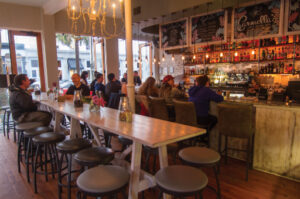Charleston’s Rich History Illuminated Through Modern-Day Hemp Farming
In the heart of Charleston, a unique blend of history and modern agriculture is unfolding. Harold Singletary, a local hemp farmer and certified public accountant, is making waves not just in the business world but also in uncovering and honoring his family’s legacy. Each day, he takes a stroll down East Bay Street towards the Old Exchange Building. It’s a pathway that resonates deeply with him, as he walks where his ancestors once trod, embodying a sense of belonging and purpose.
A Connection Through Time
Singletary discovered his connection to Charleston’s complex history through Edward Ball’s bestselling book, Slaves in the Family. The research unveiled that his great-great-grandmother, Katie Heyward, had ancestors who were enslaved by the prominent Ball family. The affectionately named hemp farm, Bright Ma Farms, pays tribute to her legacy, embodying a story of resilience and strength.
In a surprising turn of events in 2023, Singletary was enlightened by research conducted by Lauren Davila, a graduate student. She uncovered advertisements for the 1835 sale of 600 enslaved individuals belonging to the Ball family, a chilling event that marked the largest single sale of enslaved people in U.S. history. A historic marker stands today at the very site of this auction, a poignant reminder of the pain experienced by many.
Unraveling History
The auction, which took place over two chaotic days, sold away a staggering 770 individuals from the Ball family alone. Ann Ball, the widow of John Ball Jr., made the heart-wrenching decision to buy back 215 of those individuals, including Singletary’s ancestors Adonis, Tenah, and their daughter Binah. This complex mix of personal tragedy and familial ties served as the foundation for Singletary’s journey.
“Now that this history is recognized, it can be used to change the narrative,” said Singletary, now a proud farmer and entrepreneur. Standing at an impressive six-foot-seven, he’s made a name for himself in the agricultural business, launching Bright Ma Farms on 10 acres of land he inherited from his great-grandmother’s granddaughter. This land is rich with the legacy of resilience and strength passed down through generations.
Building a Legacy
Singletary’s family farmed extensively in the region, contributing produce to local grocery stores like Piggly Wiggly. His journey began humbly but has blossomed into an innovative ag-tech company focusing on climate-smart materials. His collaborations include recognizable names like Nasa, the S.C. Research Authority, Ford, and Amazon. The mission? To create sustainable materials ranging from biofuels to composites used in everyday products.
Transforming Pain into Purpose
As he strides into corporate offices, Singletary is unwavering about the background that has shaped his life and work. “I always tell our story,” he insists. “I am not coming in asking for something that my ancestors haven’t already paid for.” His pride and determination shine through as he makes connections in the business world, wielding the history of his ancestors as a powerful narrative.
In an unforgettable moment, Amazon highlighted Bright Ma Farms during a major conference, putting Singletary’s story—and that of his ancestors—front and center. You see, Bright Ma was not just a name; it was a legacy of toughness, hope, and dreams unfulfilled in her lifetime, but rekindled in the next generations.
From Past to Present
The juxtaposition of Singletary’s office and the auction site impacts many who reflect on the layers of history embedded in Charleston’s streets. Lauren Davila, who met Singletary at a ceremony unveiling a marker for the historic auction site, shared her awe at the closeness of such a painful past to a thriving present. It’s a vivid reminder that history is often closer than we think.
As Charleston continues to thrive as a cultural epicenter, the intertwining legacies of hardship and triumph remind us of an essential truth: past injustices can fuel future successes. Singletary’s journey is a beacon of hope, highlighting that from the worst of histories, the brightest of futures can bloom.



























